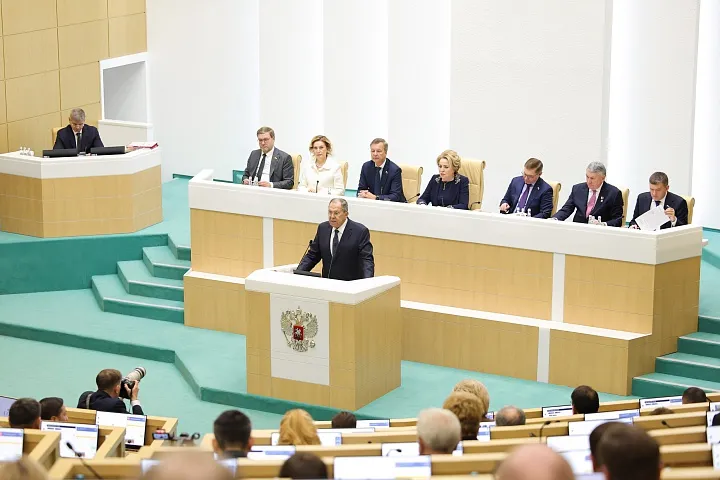March 1, 2024 (EIRNS)—Because it is massive, and involves two founding national powers of the BRICS group of nations, Russia-India trade with national currencies since 2022 has provided a very valuable lesson. The two nations have discovered and proven that new productive credit and investment is the way—more or less the only way—trade in national, non-reserve currencies can be successfully sustained. They point to the principles of productivity and progress of Lyndon LaRouche’s inimitable 2000 work published in EIR, “Trade without Currency.” A Feb. 29 [editorial column]( https://www.thehindubusinessline.com/opinion/editorial/russia-india-rupee-trade-throws-up-useful-lessons/article67900849.ece ) in the “Business Line” section of The Hindu makes this clear, while a Bloomberg News wire the same day merely throws up anti-BRICS horse feathers about it.
The editorial states a useful truth: “The major impediment to settling India’s global trade in rupees is the trade deficits it runs with most countries.” (That is, the impediment is not the U.S. dollar.) As India’s oil imports from Russia grew from nothing to 2 million bpd during 2022-23, Russian exporters piled up large reserves of rupees that Russia thought it could not use, at one point reaching over $40 billion equivalent. Russian Foreign Minister Sergei Lavrov himself proclaimed at the G20 meeting in Delhi in early September 2023, that these rupee reserves were a serious problem and that Russia wanted payment in another currency, preferably China’s RMB. India rejected that, and letting India pay in the United Arab Emirates’ dirham was introduced, but did not help much. India and Russia famously had opened vostro accounts in Indian banks for the Russian exporters to place their rupee surpluses, and India had created a new settlement platform. But then, what?
India proposed that Russia’s (export companies’) rupee reserves be invested in Indian government bonds and the securities of major Indian construction/engineering companies.
The Hindu editorial described how: “Russia has reportedly used the rupees held by it to pay for imports from India; [to] invest in infrastructure projects; in equity markets and for purchase of government securities. Both governments seem to have worked together to identify projects, such as the joint venture to make and maintain 120 trains for Indian Railways, or the prospective deal to build 24 cargo ships in Goa shipyard for operating in the Caspian Sea.” What are these, but elements of building the International North-South Transportation Corridor? The Hindu could have continued naming recent projects by Indian infrastructure engineering companies in the Eastern Maritime Corridor, and in Russia’s Northern Sea Route infrastructure developments.


